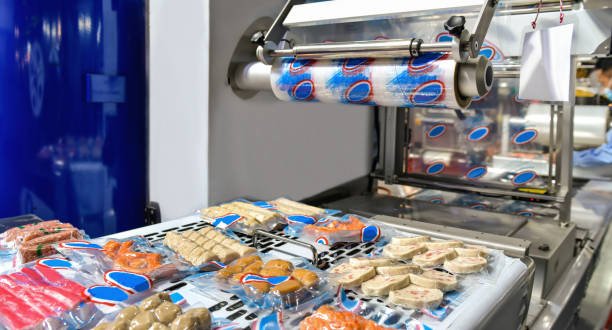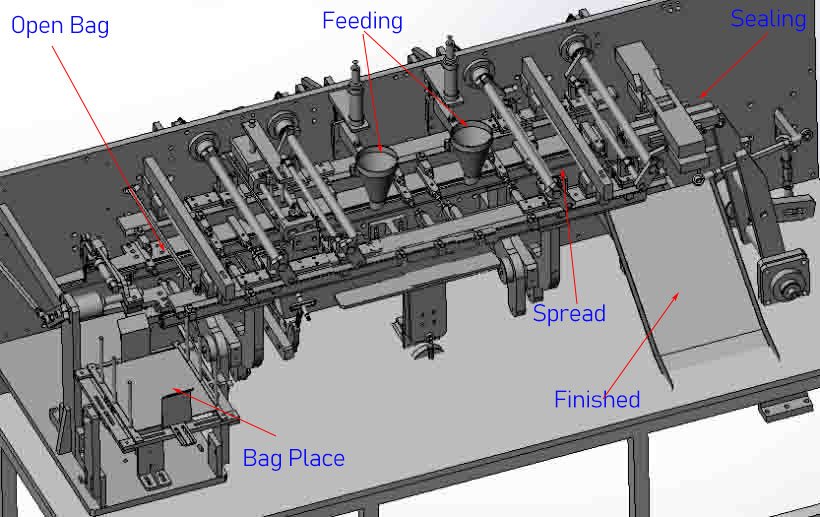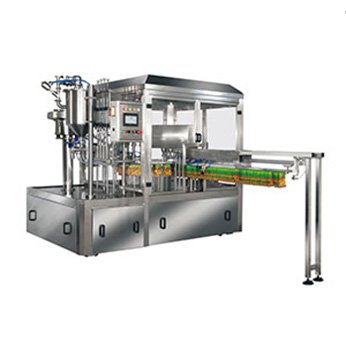
Do you know the evolution of snack packaging?
Know more about the snack packaging can help you to improve the selling!
The History of Snack Packaging
With the development of the times, packaging has become an indispensable part of products. Going back to ancient times, The Evolution of Packaging Materials was widely used only after the invention of paper and cloth. From the primitive use of plant leaves for packaging to paper packaging, various materials are now used for packaging snacks. Traditional packaging of Egyptian and Chinese snacks has also contributed a lot to packaging design inspiration. Packaging designers may consider ancient wisdom and integrate modern technology to elevate food packaging. Meanwhile, with the continuous development of manufacturing, from initial paper packaging to plastic bag packaging, and now to sealing, boxes, cans, and other packaging methods, it represents progress in human manufacturing.
Importance of Snack Packaging in Consumer Goods
You might not realize how important snack packaging is in consumer goods.
As part of marketing strategy, major retailers do not overlook packaging. They enhance brand awareness by creating creative themes during various festivals. Visually appealing and unique packaging catches the consumer’s eye. You often find that successful snack brands periodically update their packaging, adding design aesthetics to enhance and improve the packaging.
Good snack packaging protects products from external factors such as light, moisture, and oxygen, maintaining freshness and food safety, and extending shelf life. Moreover, when you see unique snack packaging designs, you may be inclined to try and purchase them, which effectively markets new product launches. Packaging serves as a medium for communication between brands and consumers, conveying specific product information clearly for customer reference and inspection. Portable packaging also facilitates consumer carrying and sharing, which explains the prevalence of individual and family-sized packaging on the market.
As awareness of environmental protection grows, consumers are increasingly willing to accept recyclable and biodegradable packaging materials as a way to give back to society, aligning with sustainable development trends.
Industrial Revolution and Early Innovations
Before the 19th century, the invention of cans and jars ushered in the era of packaging snacks.
Impact of the Industrial Revolution on Packaging Methods
Introduction of tin cans, glass jars, and early paperboard packaging for snacks.
Before the Common Era, wooden crates and ceramic jars were among the earliest forms of industrial packaging, used for storing and transporting goods such as grains and alcohol.
In the mid-19th century, in 1856, American inventor Oliver Longwos patented corrugated paper, which initially wasn’t immediately used for packaging but laid the foundation for later developments in corrugated cardboard boxes. By the late 19th century and early 20th century, advancements in papermaking technology led to the widespread use of paper-based packaging.
At the end of the 19th century and the beginning of the 20th century, in 1895, William Michael invented a commercially viable canning machine, industrializing the production of metal can packaging. During the same period, the invention of filling machines also popularized glass bottle packaging, widely used for food and beverage packaging.
In the mid-20th century, in 1933, polyethylene was discovered. Due to its physical properties, commercial production of polyethylene film began in the 1950s, gradually popularizing plastic bags and films in the packaging industry..
20th Century Developments in Composite Materials
Revolutionary Changes
Development of Flexible Packaging: Wax paper, cellophane, and aluminum foil.
Introduction of Vacuum Sealing and Modified Atmosphere Packaging (MAP)
From the early to mid-20th century, basic plastic films such as polyethylene (PE) and polypropylene (PP) began to be developed. However, it wasn’t until the mid-century that these packaging materials were widely applied in food, industrial, and daily use packaging, with advancements in plastic processing technology.
In the 1950s, to improve the barrier properties and strength limitations of single films, composite films combining plastics with other materials like aluminum foil or paper began to emerge. These flexible packaging types, seen widely today in various types of simple bags, became extensively used in industries such as cosmetics, electronics, and medical.
Including shrink films and stretch wrap films, these technologies developed during this period, especially shrink films based on polyvinyl chloride (PVC) and polyethylene terephthalate (PET), are widely used in outer packaging for beverages, food, and tray wrapping. Products of this nature are packaged using a shrink packing machine, which consists of two parts: a side sealer machine and a heat tunnel machine.
Stand-up Pouches became popular from the late 1980s to early 1990s due to advancements in plastic composite technology. Their popularity stems from their ability to stand for display, space-saving attributes, easy opening, and designs with zippers. Horizontal premade pouch packing machines are used to efficiently package these pouch types, ensuring high production output.
Advancing into the late 20th century and early 21st century, high-barrier flexible packaging materials such as EVOH (ethylene-vinyl alcohol copolymer) and PVDC (polyvinylidene chloride) composite films were developed to meet the demand for longer shelf life. These materials have been widely applied, effectively extending the shelf life of food and other goods. You can now see products on shelves with shelf lives extended from one month to over six months.
Modern Snack Packaging
In the mid-20th century, polyethylene was discovered in 1933, and due to its physical properties, commercial production of polyethylene films began in the 1950s. Plastic bags and films gradually became popular in the packaging industry.
From the late 20th century to the early 21st century, after the 1960s, multi-layer composite materials such as aluminum-plastic composite films, PET/PE structures, and others were developed to improve packaging barrier properties, durability, and convenience. These innovations significantly revolutionized the packaging of ready-to-eat and fresh foods.
Entering the 21st century, with the development of the Internet of Things (IoT) and nanotechnology, the concept of smart packaging emerged. Packaging began to offer functionalities beyond mere containment, such as temperature and humidity indicators, anti-counterfeiting tracking, modified atmosphere packaging (MAP), antimicrobial packaging, and time-temperature indicators. In Fruit snack packaging, maintaining optimal temperature and humidity is crucial; moisture can affect the texture of freeze-dried fruits, compromising their crispness and consumer experience. Zipper closures added to stand-up pouches allow for resealing, enhancing convenience.
Simultaneously, diverse packaging options with eco-friendly features have emerged, promoting research into biodegradable materials and recyclable packaging.
Types of Snack Packaging: Plastic Snack Packaging
There are many types of snack packaging designed to meet various snack needs and provide convenience in daily life. What types of snack packaging do you commonly encounter?

Pouches: Common types include stand-up pouches, four-side seal pouches, and back seal pouches, suitable for snacks like dried fruits, potato chips, and candies. They are lightweight and offer good sealing. Our premade pouch packing machines are suitable for packaging these types of pouches.
Aluminum Foil Bags: These bags provide high moisture resistance and light protection, suitable for snacks like ready-to-eat foods, coffee beans, and tea.
Multi-Layer Films: Composed of multiple layers of materials, combining the advantages of various materials, widely used in various snacks for excellent barrier properties. This material can be used in roll form and processed with vertical packaging machines for bag forming and sealing.
Stand-up Pouches: A type of pouch with a reinforced bottom design and sometimes equipped with a zipper for easy display on shelves and convenient consumer storage. Ideal for products like granola bars, dried fruits, and beef jerky.
Boxes: Including rigid paper boxes, plastic boxes, or composite material boxes, used to protect fragile snacks like chocolates and biscuits while providing a good display effect. Box packaging often involves secondary packaging, where box packaging machines automate folding and sealing. You often see individually packaged small items inside these boxes, enhancing product appeal.
Cans & Jars: Various types such as plastic cans, paper tubes (chip tubes), tin cans, and aluminum cans. Used for liquids, grains, and powders. Canning provides long-term freshness and high recyclability. Canned packaging enhances food preservation and offers features like easy resealing for multiple uses. Different sizes of cans require corresponding filling machines, adjustable to fit different needs.
Bottles: Commonly used for juice and functional beverage packaging, transparent or colored PET bottles allow visual display of contents.
Snack Packaging Process
In simple terms, you can understand that the snack packaging process consists of the preparation of raw materials, design of packaging, packing and sealing of the product through packaging machines, quality control, secondary packaging (finishing and crating processing), to which you can add the corresponding labeling machine to complete the labeling step.
For molding and assembly, there are some complex packaging structures that can be converted from flat to three-dimensional forms by molding machines. Rolls of film as the outer packaging can be cut into individual bags by vertical packaging machines, pillow machines and other self-bagging packaging machines.
Quality control is also a step that should not be overlooked in food packaging. After packaging is complete, products go through metal detection, weight testing, and visual inspection to eliminate nonconforming products and ensure the quality and food safety standards of each product.
Labeled products can help traceability and unified management to protect consumer rights.
Packaging and palletizing is the qualified snack products Jing a loaded into the outer box or pallet, this step to facilitate transportation and warehousing, this process is more to join the protective measures, such as moisture-proof and shock-proof packaging materials.

Snack Packaging Machine
Different machines serve different functions to meet various packaging needs. Factories can customize configurations based on snack characteristics and production requirements to achieve efficient automated production processes.
Common types of packaging machines include:
Vertical Form Fill Seal Machine (VFFS): Uses roll film to form, fill, and seal bags, suitable for stand-up pouches, and four-side seal packs, and adaptable to quickly switch between different packaging sizes.
Horizontal Flow Wrapper Machine: Used for high-speed packaging of bar-shaped and block-shaped snacks, wrapping products in continuous film and heat-sealing them into individual packages.
Carton Box Packing Machine: Packs pre-packaged snacks into paper or plastic boxes in preset quantities for secondary packaging, enhancing product presentation and protection.
Filling Machine: Fills granules, powders, and liquids into containers, ensuring safe storage for products like protein powder, baby formula, canned fish, canned fruit, and pre-packaged vegetables.
Sealing and Cutting Machine: Heat-seals or adhesive-seals filled bags and cuts them to specified lengths, ensuring packaging integrity.
Automatic Weighing Machine: Precisely weighs snacks before filling to ensure consistent product weight per package.
Metal Detection and Rejection Machine: Installed on production lines to detect and remove products containing metal contaminants, ensuring food safety.
Automatic Labeling Machine: Automatically applies product labels or barcodes after packaging, enabling product identification and traceability.
These machines can be combined and customized according to snack characteristics and production needs, facilitating efficient automated production processes.
Sustainable Snack Packaging
The trend towards eco-friendly packaging materials (such as compostable films and recyclable materials) is providing food manufacturers with valuable sales ideas. This initiative helps businesses reduce resource consumption by using renewable materials like PLA and recycled paper to create reusable plastics. It decreases environmental pollution, reduces reliance on fossil fuels, alleviates pressure on marine pollution, and preserves ecological balance.
Moreover, it enhances a company’s image by promoting environmental packaging, attracting more environmentally-conscious consumers, and boosting corporate social responsibility. On the other hand, the concept of sustainability is also driving technological innovation in the packaging industry. You can now find edible packaging, water bottle-shaped packaging, and other creative snack packaging designs on the market.
Conclusion
Summary of Key Points
Recap of how snack packaging has evolved from ancient times to the present day.
Importance of continuous innovation and sustainability in shaping the future of snack packaging.
Snack packaging has evolved from ancient times to the present day, with continuous improvement and discovery, Snack packaging has become a part of people’s life because of which the human beings’ demand for life has gradually increased. Meanwhile, in the era of automation, packaging machines have become an unstoppable trend, people are pursuing the programmed, standardized management, step by step to reduce the labor force, and continue to progress.
In the future, consumer demand for healthy snacks increases, and packaging needs to convey health messages such as clean label, additive-free, and organic, prompting packaging design to focus more on transparency and the effectiveness of information delivery. The snack food packaging industry is moving towards a more environmentally friendly, intelligent and personalized direction, and companies that can adapt to these changes and continue to innovate will gain greater market share in the coming years.





